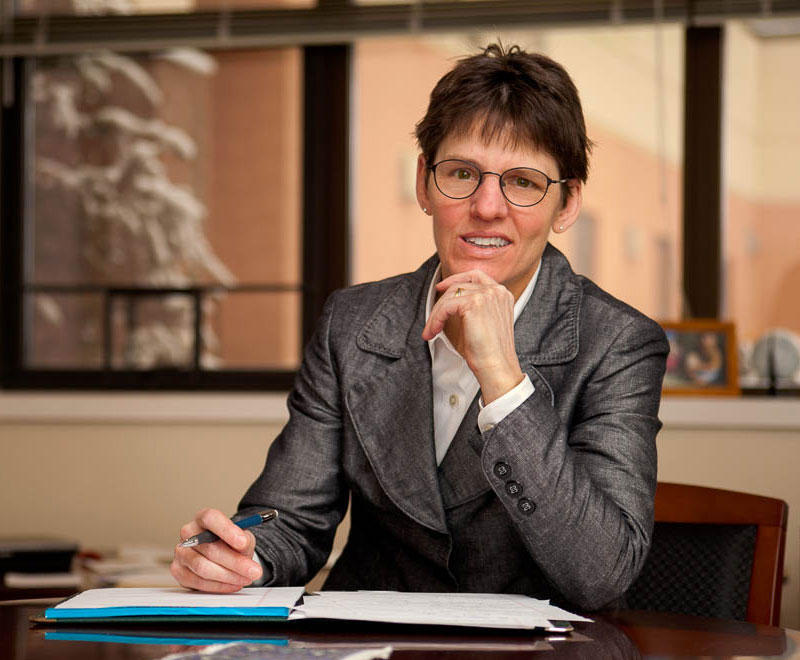Our Speaker on May 21, 2020 was Susan Mooney, MD, MS, FACOG, President and Chief Executive Officer at APD

Sue Mooney, MD, MS, FACOG has been the President and CEO of Alice Peck Day Memorial Hospital since April of 2013.
She completed her undergraduate degree at Princeton University, her Medical Education at the University of Pittsburgh School of Medicine, and her residency at the University of New Mexico in Albuquerque.
She joined the Medical Staff at APD in 2000 as a fulltime Obstetrician/Gynecologist and continued in that role until 2005 when she took a leave of absence to pursue fellowship training as a Veterans Administration Quality Scholar. During that two year period of time, she received a Master’s Degree in Healthcare Quality Improvement from the Center for Evaluative Clinical Sciences at Dartmouth (now The Dartmouth Institute). Upon her return to APD, she became the Medical Director of Quality and ultimately the Chief Medical Officer before transitioning to her current role.
Dr. Mooney is passionate about improving the quality of care that APD provides to patients
Susan Mooney, MD, provided an update on COVID-19 impact on APD and APD’s clinics and lifecare business as well. Highlights of her talk:
- To prepare:
- Create more capacity in hospitals [APD developed a plan to grow bed space from 25 to almost 50];
- Assure there was a larger supply of Personal Protective equipment (PPE)
- As of the middle of March, stop all emergent and non-emergency cases, anything that wasn’t immediately life-threatening.
- Providers came up with a strategy to provide telehealth/outpatient care, doing some appointments with either telephone or video conferencing.
- Systems were established to keep non-COVID patients and ourselves safe in the environment. Just because COVID was in the environment didn’t mean the patients with other health crisis won’t need care. There was a need to deal with patients having broken bones, COPD exacerbation, heart issues, other infections, etc., and protect these patients from getting COVID.
- Community did a great job of flattening the curve – we didn’t see a big increase in patients. Now, trying to LIVE with the virus until there’s a vaccine or cure. Now in a phase of re-starting our deferred care, management of chronic problems, routine screenings, spine surgeries and other routine care.
- We instituted new protocols for PPE – when you arrive today, you will be screened, have your temperature taken, be given a mask. Sue is screened every day as is everyone coming to work at APD no matter into which building you enter. Screening is done on every patient arriving at APD too.
- Physical/social distancing – they have worked on non-clinical spaces to make sure there is 6 feet or distance between people in offices, break rooms, cafeteria, etc. Waiting rooms are spaced out to minimize risk of transmission of disease.
- All staff have re-learned how to clean our environment more frequently, and carefully.
- PPE challenge – DHMC had an army of people tracking it down – APD now has stockrooms full of gowns and masks, etc., necessary to keep staff and patients safe.
- Multi-specialty clinic – They have systems in place to assure that anyone seeking care for any respiratory symptoms don’t come in contact with those individuals who don’t have these problems. They work hard to keep these individuals out of the general population. They are seen in a segregated environment and tested for COVID. APD has a separate respiratory clinic where anyone with any sort of respiratory symptoms is seen. We have a mobile testing unit on our campus to take specimens which are done at DHMC with about 24-hour turnaround.
- Providers wear typical PPE but also eye protection.
- Telehealth –This idea has been around for a while, but there were many regulatory issues that prevented it from moving forward. Those barriers have been eliminated. For example, a physician in NH can provide service to a patient in VT. Licensure is no longer an issue; APD is allowed us to bill telehealth visits at parity for in-person visit.
- Providers are learning a lot about Telehealth. For example:
- The visit works best if patient has pre-existing relationship with provider,
- It is often dependent on broadband capacity – spots in rural NE where it doesn’t work well, so variability,
- Technology – Patients have to download the app to their equipment then launch at the right time. This can be problem for those unfamiliar, or uncomfortable learning new technology..
- APD never closed, kept providing services. Used the time when their volumes were lower to learn how to co-exist with COVID.
- Some changes made will continue:
- APD will maintain a higher level of infection prevention, thanks to their environmental staff who have stepped up to do a great job keeping the environment safe.
- Susan believes that the switch to telehealth will be a permanent change.